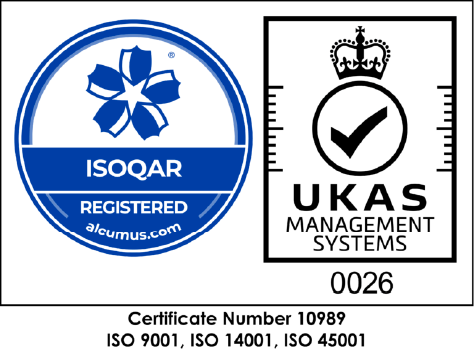The Environment Agency has updated its fire prevention plan guidance. The update includes further information on the Agency’s fire prevention plan demands. New advice includes physical demonstrations for alternative measures, steps to reduce the risk of fire from batteries and more. After a review, we find that this update will impact all sites handling and storing combustible wastes.
FPP UPDATE
Fire prevention plan guidance to date
Since 2015, the Environment Agency (EA) have clearly set out their fire prevention expectations for sites storing combustible waste. In their November 2015 fire prevention plan guidance (FPP) consultation, the EA says that “the guidance was in response to a number of high profile fires at wastes sites…”
The most notable aspect of this guidance was that the EA needed to approve a site’s FPP before a permit was issued. Here, the EA’s intent was to ensure that each site met the following three aims and support the fire and rescue services (FRS):
| Minimise | the | likelihood | of | a | fire | happening | |||||
|---|---|---|---|---|---|---|---|---|---|---|---|
| Aim | for | a | fire | to | be | extinguished | within | 4 | hours | ||
| Minimise | the | spread | of | fire | within | the | site | and | to | neighbouring | sites |
For the next five years, the FPP guidance remained unchanged to a large extent. Albeit, during that period the industry’s desire for clarity surrounding fire prevention advice without being over-prescriptive in approach grew.
As an example, the means of reducing fires by addressing the source waste stream have been identified more recently. The ESA (Environmental Services Association) launched the Take Charge campaign in 2020. On behalf of the ESA’s waste sector members, the Take Charge effort aimed to reduce the number of fires caused by wrongly discarded batteries. In a press release, the ESA Director explains that “…the majority of batteries thrown away in the UK at the moment are not recycled properly. Fires caused by carelessly discarded batteries endanger lives; cause millions of pounds of damage and disrupt waste services.”
However, a point often missed is how hard it is for some sites to meet rigid FPP guidance. The team at Wiser knows this first hand. One of our long-term clients struggled with water availability for their permit application. Indeed, sourcing enough water is a common problem for many waste sites. Most are left with no option but to buy costly water storage tanks and automated suppression systems. In response, we helped our client by providing the EA with a suite of practical and site-specific FPP alternative measures.
With the above in mind, it is no surprise that the first major FPP update arrives responding to those issues.
Major changes to the fire prevention plan guidance
The January 2021 FPP update comes with a number of changes to the guidance. This includes changes to requirements for alternative measures, handling batteries, persistent organic pollutants (POPs), end-of-life vehicles (ELVs), water supply and the impact of the weather.
Physical demonstration of alternative measures
The guidance does allow sites the option to propose alternative measures. Simply put, the EA admits that the guidance is not a one-size-fits-all. Thus, the EA will consider alternative measures that demonstrate that permit holders can still meet the spirit of the EA’s FPP aims. For instance, a site with no sensitive receptors nearby could argue that they do not need to put out a fire within four hours. Or, a site with water supplies further than 100 meters away could use long-term firefighting strategies.
Although the option for alternative measures is available, the burden to conclusively demonstrate and meet EA minimum standards is with the operator. In other words, an FPP needs to clearly show that your alternative measures will actually work in the event of a fire. In the 2021 update, the EA outlined that they will require a physical demonstration to show that an alternative measure meets their expectations. Furthermore, the EA may ask to visit your site or request a film of a timed demonstration to observe the alternative measure in action.
Batteries
The EA outlines that batteries are found in many waste streams. This is a result of their incorrect disposal and creates a risk of fire. Thus, FPPs should detail the steps taken to reduce the fire risk coming from wrongful battery disposal. The EA’s reasoning here supports the view of the WISH Forum (Waste Industry Safety and Health Forum). Within their published guidance they warn that Li-ion batteries tend to create two types of fire:
- Sudden fires – that happen when a battery is hit by machinery. Such as crushed in a shredder or ran over by a loading shovel.
- Delayed fires – that occur when a pile of waste hides a damaged and smouldering battery. Here, the pile slowly burns and heats up before it bursts into flame.
As a result, sites need to explain how they will manage the risks posed by batteries. For example, a site could show how they store and isolate lithium-ion batteries in safe containers and away from other combustible items. The idea here is that the site needs to show how they prevent their batteries from damage or coming into contact with other risky wastes. Going further, the guidance asks for the quarantining of any damaged Li-ion batteries. Storage in a waterproof sand-filled container and 6 meters away from buildings and other combustible materials is a must.

Fire Prevention Plans should now detail the steps taken to reduce the fire risk coming from wrongful battery disposal.
Persistent Organic Pollutants
A whole new section has been added about POPs. In an earlier post, the team at Wiser explained that the persistent nature of POPs can cause serious harm to the environment. Broadly, POPs are chemicals that are resistant to natural decay and can make their way back into the environment.
In the EA’s FPP guidance they first state that sites should identify and segregate all of their POPs waste. Plus, the site should also mark the pollutant’s storage location on their site layout plan. Lastly and in the event of a fire, any firewater or residue should be correctly cleaned-up in line with the POPs regulations 2019. This means that the FRS must know that there are POPs waste on-site and the firewater disposed of as hazardous POPs waste. This potential alone could cause major issues for operators.
ELVs
The EA have revamped their FPP ELV guidance. Bringing their advice up to date to include details about electric vehicles (EV), the depollution process and more. In short, the guidance looks to instruct scrapyards to plan how they will separate their combustible items and have access to enough water (1,800 litres per ELV) to put out each car that is on fire.
EV scrapyards should have the EV’s Li-ion battery removed as soon as it arrives on site. The EA clearly state that taking the battery out of the vehicle must happen before it is stockpiled. Also, those same sites must plan how they will manage the fire risk posed by their EV’s batteries.
All scrapyards must plainly define their depollution process. Their FPP should include the plans that show where their depollution takes place and how their ELVs are stored. Equally, operators should organise their sites to allow for active firefighting. Simply put – (i) plan the scrapyard so unburnt vehicles can be accessed and moved to prevent the fire spreading, (ii) ensure there is a 6-metre gap between stockpiled vehicles and (iii) only stack 3 ELVs on top of each other. Lastly, the depollution process must occur before the ELV is baled.
Water
There have been a few changes to the supply of water. The EA now points out that quick and easy access to a water supply will give the FRS the best chance of extinguishing a fire. They define quick and easy access as having a water supply within 100 meters of the site. The FPP should also stress the practicality of pumping water. In other words – show why roads, fences, walls and other obstructions will not stop the FRS from pumping water from a hydrant.
Sites should have access to enough water to deal with the worst-case scenario: their largest waste pile catching fire. For the most part, a 300 cubic metre pile of waste should have a water supply of at least 2,000 litres a minute for a minimum of 3 hours. For sites that store ELVs, they will need a supply of 1,800 litres to put out each vehicle.
Another key point, sourcing water from fire hydrants alone does not prove that it can deliver a reasonable flow. As a result, an FPP should check if the hydrant conforms to British Standard 750 and is serviced by the local water provider – for example, Anglian Water. Likewise, sites that use water from open sources also need to prove that their supply is ready all year-round. Open sources of water can include ponds, canals or rivers. The volume of water at these sources can often change over the seasons. So, an FPP should take the seasons into account and check the water level often.
Hot and dry weather
The updated FPP guidance adds a greater focus on the impact of the weather. Sites should explain how they will check and respond to any heating of their waste during hot and dry weather. For instance, FPPs could include the following procedures:
- shading the waste from direct sunlight or reflective surfaces
- turn and cool down hot waste piles
- monitor the waste pile’s core temperature often
- check for visual signs of heating
- shorten storage times
How the updated fire prevention plan guidance impacts you and what to do next
Generally speaking, the updated FPP guidance takes steps to refine the process. Permit holders are now able to prove their alternative measures and draft FPPs that neatly fit their site’s needs. At the same time, the EA has tightened its restrictions to better control risky combustible waste. Whilst stricter regulation can result in greater burdens for sites, we believe that this update is a step in the right direction. However, there are certain inclusions which may have serious difficulties in addressing and careful thought and planning are needed.
As a next step, we recommend that sites review their FPP. This is because the EA expects that you will revise your FPP when the guidance changes. If you need support here, we can work with you and check to see if your FPP meets the objectives of the 2021 guidance. We can then work together to submit the revised FPP to the EA and maintain compliance. For more information about how we can help you, contact us or call on 01480 462232.

